A rmarkdown does not render plots made with gganinate and plotly. The app should have a select input box to choose each plot.I saw that renderImage() and renderPlotly() should be used. How will I incorporate these functions? What is the better way of writing this code. Thanks
ui <- dashboardPage(
skin = "red",
dashboardHeader(disable = TRUE),
dashboardSidebar(disable = TRUE),
dashboardBody(
fluidRow(
box(
width = 8,
title = "Chart", background = "maroon", solidHeader = TRUE,
plotOutput("plot", height = 300)
),
box(
width = 4,
background = "aqua", solidHeader = TRUE,
selectInput("data", "Choose visual",
choices = c("barchart", "histogram", "boxplot", "bars", "sbars"), selected =
"barchart"
)
)
)
)
)
server <- function(input, output) {
output$plot <- renderPlot({
if (input$data == "barchart") {
# HIV status disclosure with marital status
myplot <- ggplot(hiv, aes(x = disclosure_status, fill = marital_status)) +
geom_bar() +
transition_states(marital_status)
myplot <- myplot + enter_fade() + exit_fade()
}
if (input$data == "histogram") {
# Distribution of age with marital status
myplot <- ggplot(hiv, aes(age, fill = marital_status)) +
geom_histogram()
myplot <- ggplotly(myplot)
}
if (input$data == "boxplot") {
# Disclosure, age and marital status
myplot <- ggplot(hiv, aes(x = disclosure_status, y = age, fill = marital_status)) +
geom_boxplot() +
transition_states(marital_status) +
shadow_wake(wake_length = 1, alpha = FALSE, wrap = FALSE)
}
if (input$data == "bars") {
# Subset the column for contraception
fp2 <- hiv %>%
select(family_planning) %>%
count(family_planning)
# Pictorial count of family planning
myplot <- ggplot(fp2, aes(family_planning, n, fill = family_planning)) +
geom_col() +
geom_text(aes(label = n, vjust = -0.5)) +
theme_minimal() +
theme(legend.position = "none", axis.title.y = element_text(angle = 0)) +
labs(title = "Histogram of types of contraceptive")
}
if (input$data == "sbars") {
# Family planning and pregnancy
myplot <- ggplot(data = hiv, aes(x = planPreg, fill = family_planning)) +
geom_bar(position = "dodge") +
facet_wrap(~family_planning)
ggplotly(myplot)
}
myplot
})
}
shinyApp(ui, server)
